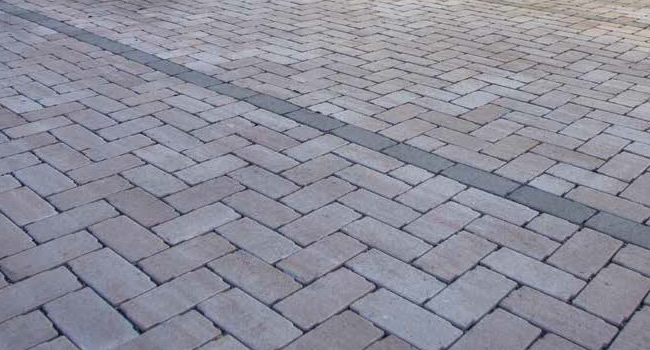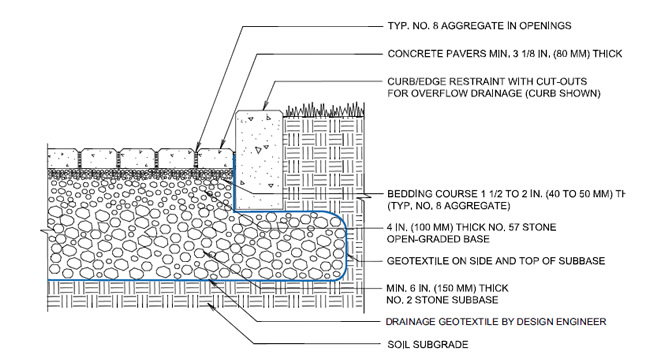The Interlocking Concrete Pavement Institute published its Tech Spec 22 this year. The document provides general guidelines on the use of geosynthetics within segmental concrete pavements. ICPI’s Director of Engineering Robert Bowers, P.Eng, spoke to Geosynthetica about the publication and the growing role of interlocking concrete pavement technologies, performance of these systems, sustainability, and more as part of the Geosynthetica GeoTalk Podcast Series 2017.
Listen to “Elizabeth Peggs’s tracks” on Spreaker.
The interview with Robert Bowers was conducted in the exhibit hall at the International Erosion Control Association’s (IECA Region One) 2017 Annual Conference and Exhibition.
Geosynthetica’s GeoTalk Podcast is published on Tuesdays. Previous episode:
Subscribe on iTunes and in the Google Play store.
GEOSYNTHETICS WITH SEGMENTAL CONCRETE PAVEMENTS
The Interlocking Concrete Pavement Institute, founded in 1993, is the North American trade association that represents the interlocking concrete paving industry. The organization publishes project profiles, material and application information, and educational resources, as well as organizes events and connects others with experts in concrete pavement manufacturing, design, and installation.

Regarding the new Tech Spec on Geosynthetics in Segmental Concrete Pavements, Bowers says that ICPI created the document for contractor and designer interest in using geosynthetics.
“[The spec helps them] understand the different type of geosynthetic materials that are available to them and how they can be incorporated in the design. Quite often, we’ll do a design of a pavement where we’re looking at separation between the subgrade and the base material to preserve the function of the material over a long period of time. Obviously, that’s looking at using some type of a geotextile.”
The 22-page document, as Bowers notes, is not to serve as a designer’s guide, but “it’s an introduction to get people at least pointed in the right direction so they can start asking appropriate questions … and focus in on the right materials for an application.”
For example, the geotextiles information in the freely available document includes descriptions of woven and nonwoven geotextiles, a synopsis of AASHTO M288, and basic guidance such as:
When placing geotextile avoid wrinkles in the fabric. Follow the overlap recommendations specified in ASSHTO M-288 … and avoid excessive overlapping of edges. Make sure the geotextile is placed in full contact with the surrounding soils or aggregates. Voids, hollows, or cavities from wrinkles created under or beside the geotextile compromises its intended function.

[NOTE: To download a copy of the Tech Spec for free, please visit https://www.icpi.org/resource-library/find-tech-spec. Select a location and then an ICPI member name. This will give you access to all 23 open-access tech specs. It will put a non-intrusive logo of the sponsor member on the top of any tech spec you download as a thank you to ICPI’s corporate members for supporting the creation of these documents.]
Information on geogrids is included too, in reference to both the segmental concrete pavements and segmental retaining walls/MSE walls.
When placing geogrids they should be installed with a small amount of tension. … When placing aggregate on top of a geogrid, spread it out so it will keep the tension the geogrids instead of releasing the tension, i.e. place the aggregate and spread it towards the free ends of the geogrid. For SRWs, do not overlap geogrid between block courses. This will push the units above the overlap out of horizontal alignment.
The 22-page Tech Spec on Geosynthetics for Segmental Concrete Pavements is available on the ICPI website: www.icpi.org.











